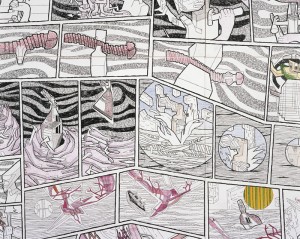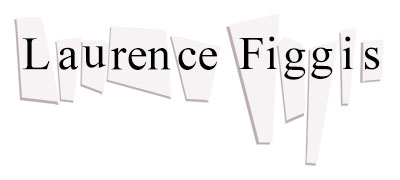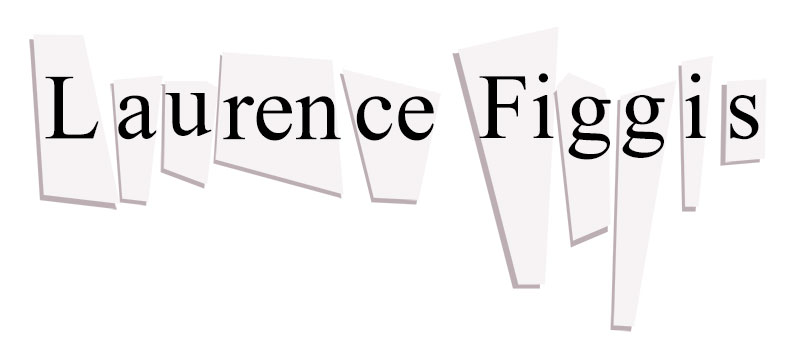May 28
2024Help—all beauty is in jeopardy!
Help—all beauty
is in jeopardy!
Struck
to the heart
by a crass angel,
dead-eyed
satellite of the gods of expedience
whose unquiet mumblings
have rocked our salience
to its foundations.
Read more →
May 28
2024Help—all beauty
is in jeopardy!
Struck
to the heart
by a crass angel,
dead-eyed
satellite of the gods of expedience
whose unquiet mumblings
have rocked our salience
to its foundations.
Read more →
Jul 01
2015Alfred Hitchcock, Contemporary Visual Art, Popular Visual Culture, Silence, The Great Macguffin, The MacGuffin, Writing as Creative Practice

Laurence Figgis, The Great Macguffin (detail), 2005-12, ink, crayon, watercolour on paper, 160 x 350 cm
I first stumbled on the (great) MacGuffin in 2005, when I was searching for a title for a piece of work that was then in production, a large scale ink and watercolour drawing that had occupied my attention for some months. I was still in the throes of making this work when I read Alfred Hitchcock’s account of the term in his seminal interview with François Truffaut. And I knew straight away that I had found not only the title for the work but also the name for its protagonist, the imaginary character (part human, part animal, part machine) with whose fortunes the drawing is principally concerned. The word itself struck me with its amusing lyric – or rather non-lyric -quality; I liked the heavy, cumbersome, down-to-earth sound. But the explanation behind the word was just as captivating.
‘MacGuffin’ is Hitchcock’s term for a pretext or plot device that in its typical and most intellectually satisfying form must always be radically under-explained within the diegetic narrative. In many cases it would not hold up to rational scrutiny if the audience subjected it to any attention. Thus in Hitchcock’s film Notorious (1946) we are led to assume that particles of uranium (viable for atomic capability) can be stored in wine bottles in the form of a crystalline black dust, hidden in the chief antagonist’s cellar. Read more →

